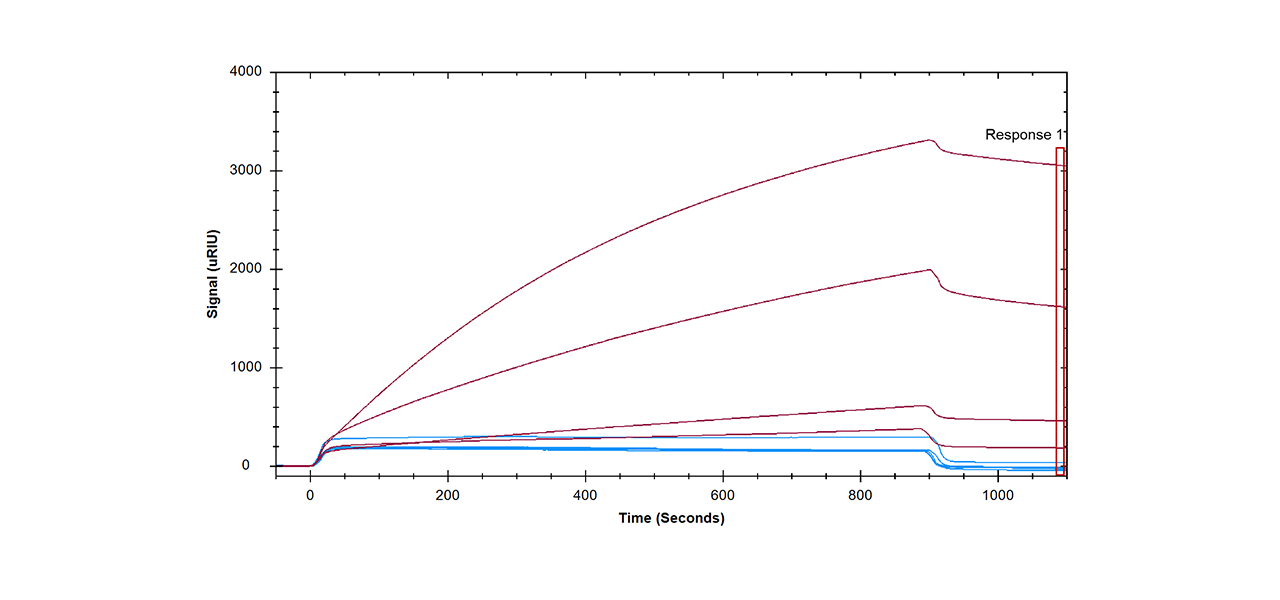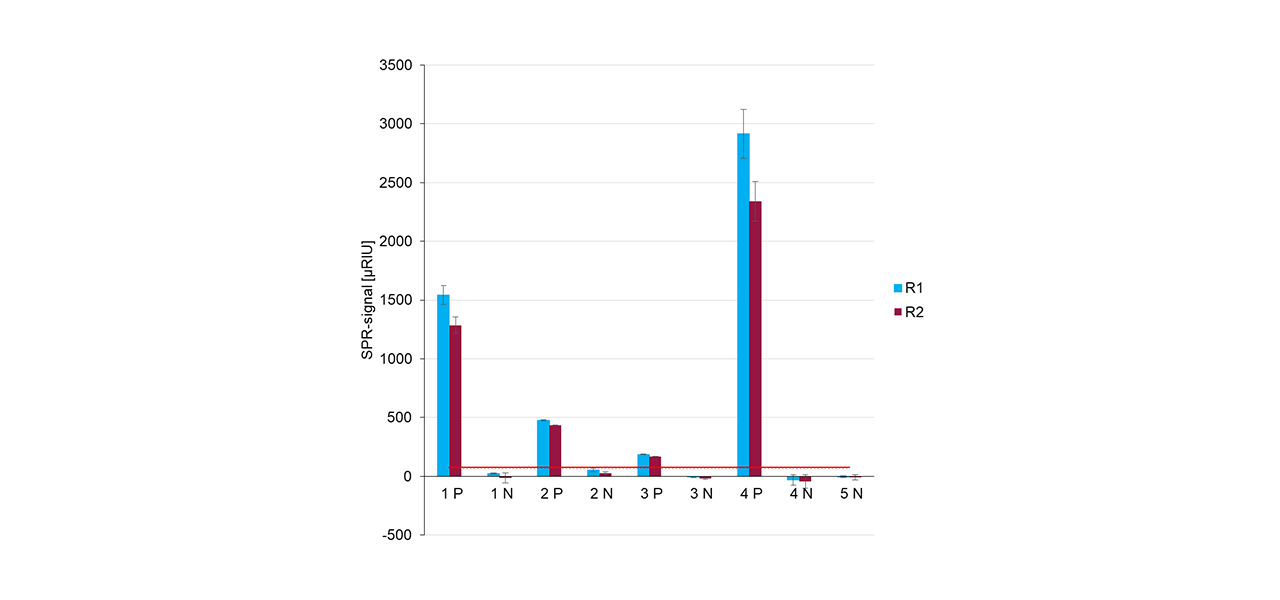
Image source: https://commons.wikimedia.org/wiki/File:SARS-CoV-2_without_background.png
Because of its central role in the viral infection mechanism, the Receptor Binding Domain (RBD) of SARS-CoV-2 Spike Protein is a major focus of COVID-19-related therapeutics, vaccine and diagnostics development.
Surface Plasmon Resonance (SPR) biosensors are valuable tools for research and diagnostics, as they provide an unmatched information depth on various biomolecular interactions with immobilized binders (ligands).
To meet the rapidly increasing demand for COVID-19-related research tools, XanTec presents the first cross-platform, ready-to-use COVID-19 SPR sensor chip. It consists of SARS-CoV-2 RBD protein homogenously preimmobilized on XanTec’s proprietary ultra-low-background polycarboxylate HC surface. This new surface is a versatile tool for various applications in clinical and pharmaceutical COVID-19 R&D and available for the following SPR instruments:
- Biacore® - C, 1000-4000, X100, T100, T200, S200, 8K, 8K+
- Reichert/AMETEK - 2SPR, 4SPR, SR7500DC, SR7000DC
- Carterra* - Carterra LSA
- IBIS - MX 96
- Bruker/Sierra Sensors: SPR-2/4, MASS-1/2, Sierra SPR-24 Pro, Sierra SPR-32
- BioNavis - 200 (OTSO), 400 (KONTIO), 210A (VASA), 220A (NAALI), 420 (ILVES)
- Horiba – XelPlex, OpenPlex
- Sartorius/Molecular Devices – Pioneer, PioneerFE
* For inquiries please contact the instrument manufacturer.

The C19RBDHC30M sensor chip was primarily developed for fast and label-free detection of anti-SARS-CoV-2 antibodies from patient serum for R&D purposes. As the sample matrix contains serum and is thus prone to nonspecific interactions, a highly bioinert chip coating, optimized reagents, and an adapted protocol are essential for highly specific and sensitive detection of anti-SARS-CoV-2 antibodies.
This is where all the optimized characteristics of XanTec’s bioinert polycarboxylate (HC) coating come into play compared with carboxymethyldextran (the coating that is normally used):
- Very low background, even with complex sample matrices like serum.
- Extremely hydrated hydrogel matrix stabilizes the immobilized RBD protein.
- Good permeability for the analytes (antibodies) increases the signal intensity.
- Superior ligand accessibility.
- Negligible mass transport limitation due to very thin hydrogel coating.
The SARS-CoV-2 RBD sensor chips are especially advantageous for imaging SPR (iSPR) systems (e.g., Carterra, IBIS MX96, etc.) in which many patient samples can be applied to the sensor chip surface in parallel to check for an immunological response (IgG, IgA, IgM).
Using the RBD protein in combination with the bioinert polycarboxylate surface ensures high specificity and sensitivity and also prevents false-positive results from samples from patients with earlier coronavirus infections or high nonspecific binding (Figs. 1a & b).


To optimize the performance of the C19RBDHC30M sensor chip, we offer the following adapted reagents:
- Referencer Reagent. For many assay developments involving anti-SARS-CoV-2 antibodies, homogeneously prederivatized sensor chips are already a valuable tool. Nonetheless, many instruments require an internal reference surface. As, because of manufacturing restraints, such a reference channel cannot directly be included on the sensor chip, Xantec has developed a “Referencer Reagent”, which inactivates the preimmobilized protein ligand in the reference channel and creates an inert reference surface by means of one short injection.
- Washing buffer. Stringent buffer solution to remove loosely adsorbed sample components, while the specifically bound antibodies remain on the chip surface.
- Mild regeneration buffer that reliably removes most analytes after exposure to human serum or other binders without affecting the structure and activity of the RBD protein.
Summary
With the COVID-19 RBD sensor chip and tailored reagents, XanTec brings considerable added value to pharmaceutical, vaccine and diagnostic research and underlines its leadership in the field of SPR sensor chip technology.
- First commercially available cross-platform COVID-19 chip surface.
- Ready-to-use SPR biosensor with preimmobilized SARS-CoV-2 RBD saves time, labor and reagent cost.
- Immobilized SARS-CoV-2 RBD yields more specific signals compared with the complete S1 spike or nucleocapsid protein.
- The underlying HC polycarboxylate hydrogel coating stabilizes the RBD ligand for long-term storage.
- Negligible nonspecific binding from serum proteins without blocking steps drastically reduces the occurrence of false-positive results. In combination with XanTec’s optimized washing buffer, positive and negative samples can be discriminated clearly.
- A mild regeneration buffer allows reuse of the chip surface and makes the assay cost-effective.
For further information regarding XanTec’s product range contact our team at sales@xantec.com.